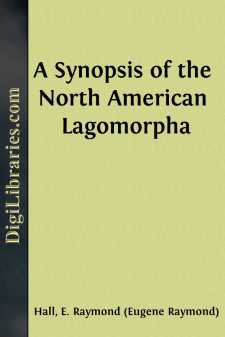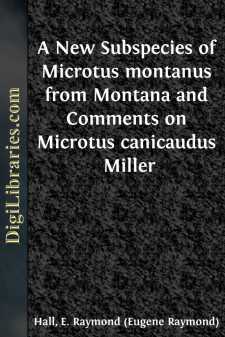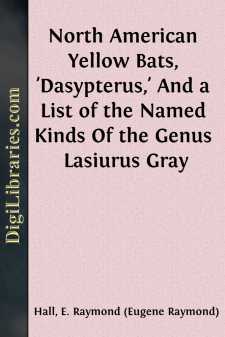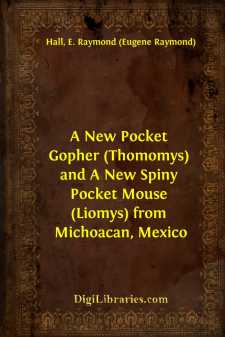Categories
- Antiques & Collectibles 13
- Architecture 36
- Art 48
- Bibles 22
- Biography & Autobiography 813
- Body, Mind & Spirit 141
- Business & Economics 28
- Children's Books 12
- Children's Fiction 9
- Computers 4
- Cooking 94
- Crafts & Hobbies 4
- Drama 346
- Education 46
- Family & Relationships 57
- Fiction 11826
- Games 19
- Gardening 17
- Health & Fitness 34
- History 1377
- House & Home 1
- Humor 147
- Juvenile Fiction 1873
- Juvenile Nonfiction 202
- Language Arts & Disciplines 88
- Law 16
- Literary Collections 686
- Literary Criticism 179
- Mathematics 13
- Medical 41
- Music 40
- Nature 179
- Non-Classifiable 1768
- Performing Arts 7
- Periodicals 1453
- Philosophy 64
- Photography 2
- Poetry 896
- Political Science 203
- Psychology 42
- Reference 154
- Religion 513
- Science 126
- Self-Help 83
- Social Science 81
- Sports & Recreation 34
- Study Aids 3
- Technology & Engineering 59
- Transportation 23
- Travel 463
- True Crime 29
The Subspecific Status of Two Central American Sloths
Description:
Excerpt
New name combinations for two kinds of Central American sloths that heretofore have stood in the literature as nominal species are given below, along with the evidence supporting their relegation to subspecific rank. Research assistance has been provided from a contract (NR 161-791) between the Office of Naval Research, Department of the Navy, and the University of Kansas.
Bradypus griseus ignavus Goldman
Goldman (Smiths. Misc. Coll., 60(22):1, February 28, 1913) named the three-toed sloth from extreme eastern Panamá (Marraganti: 1 specimen, the type) and northwestern Colombia (Atrato River: 2 specimens) as Bradypus ignavus. He characterized the newly-named species as differing from Bradypus griseus (type locality Cordillera de Chucu, Veragua, Panamá) and Bradypus castaneiceps (type locality, Chontales, Nicaragua) in "nasals shorter, with anterior border concave or emarginate, the emargination deepest at median suture; squamosal arm of zygoma broader, more rounded, less acutely pointed anteriorly; palate less deeply grooved posteriorly; symphysis of mandible less produced anteriorly beyond plane of first molars." Later, Goldman (Smiths. Misc. Coll., 69(5):57-58, April 24, 1920) arranged Bradypus castaneiceps as a subspecies of B. griseus, reaffirmed the full specific identity of Bradypus ignavus, and identified specimens from Tapalisa, Cituro, and Real de Santa Maria, all in eastern Panamá, as belonging to B. ignavus.
In order to satisfy ourselves about the taxonomic relationship of B. ignavus to B. griseus, we have examined the following materials in the American Museum of Natural History: ignavus: Panamá: Cituro (No. 38191), Tapalisa (No. 38102), Real de Santa Maria (Nos. 37619-37621); griseus: Panamá: La Chorrera (No. 31427); Costa Rica: Juan Viñas (No. 2824), Palmar (No. 139313), Vijagual, San Carlos (No. 139833); castaneiceps: Nicaragua: Chontales (Nos. 28477 and 28478).
The specimens from Real de Santa Maria, Tapalisa, and Cituro, average darker than all others, but this darkness is approached in certain specimens of griseus (for example, No. 139833, from Vijagual, San Carlos). The broader, more rounded and less acutely pointed squamosal arm of the zygoma supposedly characteristic of ignavus is matched in certain specimens of griseus (for example, in No. 2824 from Juan Viñas, Costa Rica) and the character is variable among specimens referred to ignavus; the shape of the squamosal arm is of doubtful taxonomic worth in the present connection. The depth of the grooving on the palate seems to vary with age and is of questionable value taxonomically. The emarginate nasals of ignavus are matched in griseus (No. 139833) from Vijagual, San Carlos, Costa Rica. The extension of the anterior symphyseal region of the mandible is short in ignavus; the specimen with the longest extension (No. 37621 from El Real), however, has the extension only barely shorter than does No. 139933 of griseus from Vijagual, San Carlos, Costa Rica. In brief, while we see the characters of ignavus as set forth by Goldman (op. cit.), we find them to be of only an average sort and not pronounced. Further, a specimen (No. 139833) from Vijagual, San Carlos, Costa Rica, provides a morphological intergrade between griseus and ignavus. Accordingly, we arrange ignavus as a subspecies of griseus; the name of the animal from extreme eastern Panamá should stand as Bradypus griseus ignavus Goldman, 1913....












